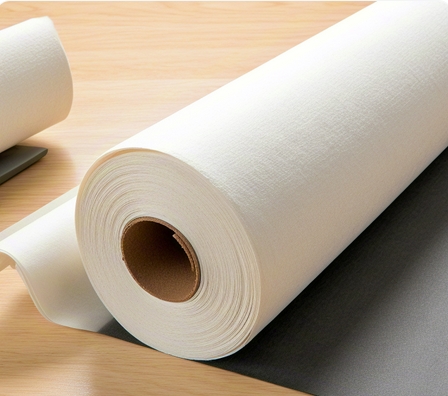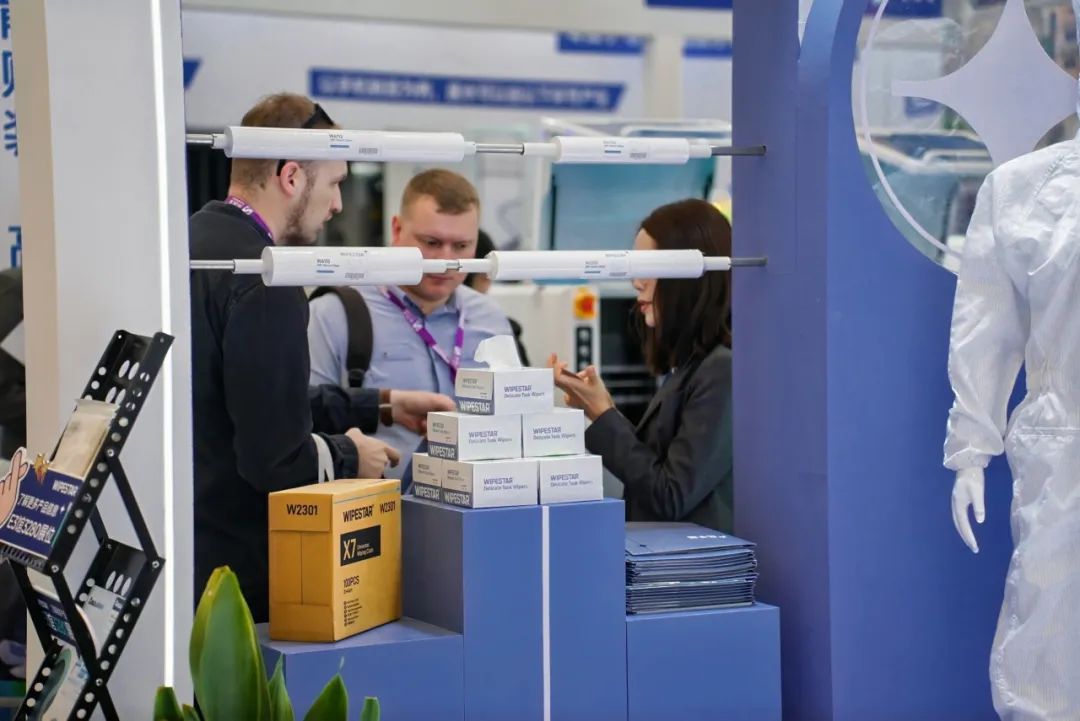Language

In-depth interpretation of core components' technology of SMT steel mesh cleaning system
In modern electronic manufacturing, steel mesh wipe paper is used as a precision cleaning medium for the solder paste printing process, and its performance directly determines the yield rate of the SMT production line. According to the process verification report of Foxconn Technology Group, high-quality wipe paper can increase the maintenance efficiency of steel screen printing machines by 40%, while reducing solder paste waste by 15%. This specially designed industrial consumables accurately remove micron-scale solder paste particles (5-50μm) and flux crystals remaining on the surface and pores of the steel mesh through the synergy between mechanical wiping and vacuum adsorption, ensuring that the solder paste deposition accuracy of the printed circuit board meets the IPC-7525 standard requirements.
Innovative Materials Engineering: The composite structure of decrypted steel mesh wipe paper adopts the steel mesh cleaning medium made by the spun lace non-woven process, and realizes a dual cleaning mechanism through the three-dimensional composite structure of cellulose fiber and polyester fiber. The inner layer of high-density wood pulp fiber layer (g of weight 45g/m²) has capillary adsorption characteristics similar to sponges and can carry 15 times the weight of cleaning solvent; the outer layer of ultrafine polyester fiber mesh (fiber diameter 1.8μm) plays the function of a precision filter and has been tested and certified to meet the Class 5 cleanliness standard. This dual-effect structural design of "adsorption + intercept" enables the wiper to maintain 98.6% clean efficiency when dealing with 0.3mm pitch BGA-encapsulated steel mesh.
The gradient hydros pinning technology adopted by leading manufacturers in precision manufacturing process and performance verification systems, uses 6 water needle bundles of different pressures to form a sheet structure with directional tensile strength. Taking the actual measured data of Panasonic production line as an example, the tensile strength retention rate of wipe paper reinforced by longitudinal fiber can reach 92% under high-speed wipe conditions of 1,200 times/hour. The hot pressing and shaping process controls the product thickness fluctuation within the range of ±0.015mm, ensuring perfect adaptation with the vacuum suction cup systems of printing presses such as DECK and MPM. Laboratory accelerated testing shows that compliant wipes can reduce the opening clogging rate of steel mesh from 1.2% to 0.28%, which is equivalent to extending the service life of steel mesh by 3.2 times.
Four-dimensional value model in intelligent manufacturing scenarios 1. Micropollution control: 2200 micropore structures per square centimeter can capture particulate matter of ≥5μm, and 99.9% cleanliness is achieved with 70% isopropanol solvent 2. Production cost optimization: The recyclable design allows single wipe paper to be processed for 4-6 cleaning cycles, reducing solvent consumption by 38% 3. Process stability improvement: The systematic cleaning solution increases the printing position accuracy of the solder paste to ±18μm, reducing the defect rate of the virtual welding by 67%. 4. Equipment compatibility innovation: 0.18mm standard thickness design is adapted to a fully automatic wipe system, and the vacuum adsorption stability index reaches 98.5%.
Key points for industry compliance selection and parameter verification. High-quality wipes that comply with IPC-7527 Rev. B standards must pass three key tests: transverse wet strength test (≥30N/50mm), ash residue detection (≤0.45%), and pH stability test (6.8-7.2). It is recommended to use the ASTM D5035 standard for tensile strength verification and evaluate the fiber shedding through the BEST recommended procedure. When dealing with 01005 ultra-fine pitch components, special wipe paper containing silicone oil treatment layer should be selected, and its electrostatic elimination efficiency can reach 10^8Ω/sq level.
In the precision SMT printing process, there is a strict correspondence between the cleaning efficiency of the steel mesh and the specifications and parameters of the wipe paper. For high-density steel mesh structures with a temperature of more than 600 mesh, it is recommended to use 80g/m2 high-res wipe paper, which is the dense fiber layer that can effectively remove micron-level solder paste residues; while conventional 400-600 mesh steel mesh can achieve a cleaning coverage of more than 97% using a standard product of 60g/m2. According to the IPC-7521 standard verification, it is recommended that the wipe paper be replaced for every 200 printing cycles completed, while the lead-free formula needs to be shortened to 150 times due to the liquidity difference, which can reduce the pad dummy rate by 0.3‰.
In-depth analysis of engineering characteristics of SMT steel mesh wipe paper
As a key consumable for electronic assembly, SMT steel mesh wipe paper adopts a three-layer composite structure design: the surface layer is modified polyester fiber, the middle layer is implanted with glass fiber reinforced mesh, and the bottom layer is equipped with a conductive carbon fiber layer. This innovative structure enables the product to meet the ISO 14644-1 Class 3 cleanliness standard, and the shedding of a single wipe fiber is controlled in the range of 15-20μm³. Laboratory data shows that its key performance indicators include: 1. G-weight stability: After 300 tensile tests, the mass fluctuation per unit area is ≤±1.8% 2. Electrostatic dissipation value: The surface resistance is stable at 10^6-10^8Ω, complying with ESD S20.20 protection standards 3. Mechanical strength: longitudinal tensile strength reaches 45N/15mm, and transverse tear resistance exceeds 32N.
Mainstream specifications follow the dual certification system of IS C 6471 and IPC-CC-830B. The core parameters include: • Die structure: PP+30% glass fiber reinforced hose (bending modulus 3800MPa) and the mainstream of the market. Kraft paper composite tube (ring compression strength ≥1800N/m) is mostly used in high-speed production lines. Roll material accuracy: Standard 10m length tolerance belt ±0.12m. Some manufacturers adopt 9.3m economical solution to reduce the cost of consumables by 15%. Adaptive size: 610mm (Panasonic NPM), 580mm (Fuji NXT), and 730mm (Siemens PLACE) three specifications cover 92% of mainstream models.
In terms of equipment compatibility design, there are currently four structural solutions in the industry: → Bidirectional one-line type: adapted to Universal GSM series, positioning repeatability accuracy ±0.05mm → Cross-coupled type: Optimize the frame calibration efficiency of MPM equipment, improve the Z-axis positioning accuracy to 0.01mm → Flat-hole docking type: compatible with domestic GKG and Desex equipment, shortening the installation time by 40% → 12-bar reinforcement type: specially designed for ASM E series, with the flexural section modulus increased to 2. 8×10^3 mm³
It is particularly important to note that the surface roughness of the wipe paper (Ra 1.2-1.6 μm) and the dielectric constant (2.8±0.3@1MHz) together affect the solder paste transfer efficiency. When the dielectric constant exceeds 3.1, it will cause 5-8% solder paste tailing, which is also the fundamental reason why high-speed production lines strictly limit this parameter.
Tags:
RELATED RESOURCES

From clean room to operating room: 7 application forbidden areas where dust-free cloth and non-woven
In the fields of industry and people's livelihood, although dust-free cloth and non-woven fabric are simil......
More

Application of reel dust-free cloth in display panel manufacturing: 0.5mm precision cleaning solutio
In the fields of advanced manufacturing and microelectronics, submicron pollution control is directly related ......
More

How to meet the Class 1000 standard for dust-free cloth? Material engineering and spray pressure con
1.Performance benchmark of clean room core consumables The dust-free cloth standard refers to the technical sp......
More

The two exhibitions concluded | WIPE STAR reshapes the new cleanliness standard with the power of sm
March 26-28, 2025The global semiconductor and electronics manufacturing industry focuses on ShanghaiTwo major ......
More
Related Products
Room 101, Building 1, Angeer Factory, No.4, Hetian Road, Shatian Community, Kengzi Street, Pingshan District, Shenzhen, Guangdong, P.R. China 518122
info@wipestar.com
+86-755-89616775
+86-755-89616773
Related Products
RELATED RESOURCES

From clean room to operating room: 7 application forbidden areas where dust-free cloth and non-woven
In the fields of industry and people's livelihood, although dust-free cloth and non-woven fabric are simil.........
More

Application of reel dust-free cloth in display panel manufacturing: 0.5mm precision cleaning solutio
In the fields of advanced manufacturing and microelectronics, submicron pollution control is directly related .........
More
WIPESTAR
微信官方公众号